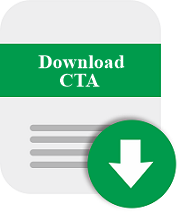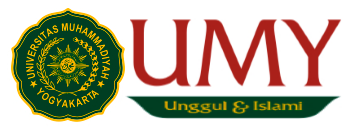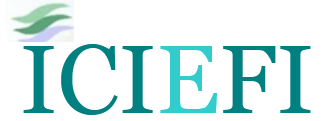Participation Banks in Turkey: Issues and Proposes Strategies Based on SWOT Analysis
Abstract
Turkey has a long history in Islamic civilisation. However, there is still lack of research to examine participatory banks in Turkey. This is despite the fact that the legacy of strong Islamic law, the majority Muslim population, and the strategic location of the country have failed to serve as catalyst to boost market share of participation banks in the country. This study is aimed at developing priority ranking of SWOT factors and strategies on the participatory bank development in Turkey. Data are collected from experts and practitioners of Participation (Islamic) bank in Turkey. Analytic Network Process (ANP) is used as the methods of analysis. The finding shows that the aspects of participatory banks in Turkey are derived from strengths, opportunities, weakness and threats factors. Sharia board is the main strength of this study, while inadequate competitive product is the main weakness. In the future, government support stands as the first priority from opportunity aspect. Islamic bank in Turkey also needs to aware on the absence of separate law as the main priority of threats aspect. Another finding shows that separated law and regulation is the main strategies of the study. Concomitantly, the study suggests separate law and regulation as the main strategy to enhance banks participation in Turkey. This study could serve as reference point for the regulator in formulating appropriate policy strategies to increase market share of participatory banks in Turkey.
Keywords
Full Text:
PDFReferences
Adem, E. S. E. N. (2014). National shariah boards: Global applications and the case of Turkey. Afro Eurasian Studies, 3(2), 5-16.
Al Arif, M. N. R., Masruroh, A., Ihsan, D. N., & Rahmawati, Y. (2020). The Alternative Strategies for Accelerating Islamic Banking Growth: Mergers, Spin-Offs, Acquisitions and Conversions. Al-Ulum, 20(1), 24-37.
Al Nasser, S. A. S., & Muhammed, J. (2013). Introduction to history of Islamic banking in Malaysia. Humanomics.
Amrani, O., & Najab, A. (2020). Morocco's participative banking sector: A cross-analysis of current state, opportunities and challenges of its five banks and three windows. International Journal of Islamic Business & Management, 4(2), 8-19.
Ansoff, H.I. (1987). Corporate Strategy, rev. ed., Penguin Books, New York, NY.
Ascarya. (2011). The persistence of low profit and loss sharing financing in Islamic banking: The case of Indonesia. Review of Indonesian economic and business studies, Vol. 1. LIPI Economic Research Center.
Asutay, M. (2013). The development of Islamic banking in Turkey: Regulation, performance and political economy. In Islamic Finance in Europe. Edward Elgar Publishing.
Aysan, A. F., Dolgun, M. H., & Turhan, M. I. (2013). Assessment of the participation banks and their role in financial inclusion in Turkey. Emerging Markets Finance and Trade, 49 (sup5), 99-111.
Baklouti, I. (2020). Is the Sharia supervisory board a friend or an enemy of Islamic banks?. Journal of Islamic Marketing.
Banking Regulation and Supervision Agency (BRSA).
Beg, S. A. N. A. (2016). Prospects, problems and potential of Islamic banking in India. International Journal of Accounting and Financial Management Research, 6(3), 9-20.
Board, I. F. S. (2020). Islamic Financial Services Industry Stability Report. Kuala Lumpur, Malaysia, July.
Büyüközkan, G., & Ilıcak, Ö. (2019). Integrated SWOT analysis with multiple preference relations. Kybernetes.
Cindy, S., Mohammad, B. L., & Teguh, S. I. (2019). Banking and Financial Technology (Fintech) Islamic Integration with Collaborative Models. Russian Journal of Agricultural and Socio-Economic Sciences, 91(7).
Dawson, S., Manderson, L., & Tallo, V. L. (1993). A manual for the use of focus groups. Boston: international Nutrition foundation for developing countries.
ElMassah, S. (2015). Islamic economy option: SWOT case study analysis. Advances in Management & Applied Economics, 5(3), 63-84.
Erol, C., Baklaci, H. F., Aydoğan, B., & Tunç, G. (2014). Performance comparison of Islamic (participation) banks and commercial banks in Turkish banking sector. EuroMed Journal of Business.
Esen, A., & Karabacak, S. (2014). National shariah boards: Global applications and the case of Turkey. Afro-Eurasian Studies, 3(2), 5-16.
Glaister, K. W., & Falshaw, J. R. (1999). Strategic planning: Still going strong?. Long Range Planning, 32(1), 107-116.
Global Islamic Economy Gateway (2019). State of the global Islamic economy 2019/20 report. https://www.salaamgateway.com/specialcoverage/SGIE19-20
Göksu, A., & Becic, A. (2012). Awareness of Islamic banking in Bosnia and Herzegovina. International Research Journal of Finance and Economics, 100(100), 1-14.
Gün, M. (2016). Analysis of participation banks in Turkey in terms of agency theory and a model proposal. International Journal of Islamic Economics and Finance Studies, 30(68), 1-15.
Helms, M. M., & Nixon, J. (2010). Exploring SWOT analysis–where are we now? A review of academic research from the last decade. J Strateg Manag 3: 215–251.
IMF (2015). Financial development index database. https://data.imf.org/?sk=f8032e80-b36c-43b1-ac26-493c5b1cd33b
Imtiaz, Q., & Shahid, M. (2013). PEST & SWOT analysis of Islamic banking in Pakistan. In The Name of Allah, The most Beneficent, The most Merciful, 19.
Iqbal, Z. (1997). Islamic financial systems. Finance and Development, 34, 42-45.
ISRA & Thomson Reuters. (2016). Islamic commercial law report.
Juliana, J., Qudsi, F. S., Disman, D., & Marlina, R. (2019). Sharia Compliance: Case Study on Murabahah Product BMT ItQan. KnE Social Sciences, 914-923.
Kadri, M. H. (2016). A study of selection of Islamic financing product in Malaysia. In Regional Convention on Islamic Studies, Melaka.
Khan, M. S., & Mirakhor, A. (1990). Islamic banking: Experiences in the Islamic Republic of Iran and in Pakistan. Economic Development and Cultural Change, 38(2), 353-375.
Lamiha, G. U. N. (2012). The future prospect for the evolution of Islamic banking in Turkey. Chinese Business Review, 11(6).
Learned, E.P., Christiansen, C.R., Andrews, K. and Guth, W.D. (1969). Business Policy: Text and Cases, Irwin, Homewood, IL.
Masood, S., Sheikh, M. R., & Abbasi, M. N. (2017). Bankers’ awareness, product marketing and performance of Islamic banks: The case of Pakistan. Pakistan Journal of Islamic Research, 18(1).
Miah, M. D., & Suzuki, Y. (2020). Murabaha syndrome of Islamic banks: A paradox or product of the system?. Journal of Islamic Accounting and Business Research.
Muhammad, A. M., Basha, M. B., & AlHafidh, G. (2019). UAE Islamic banking promotional strategies: An empirical review. Journal of Islamic Marketing.
Nugroho, L. (2014). Role of government support to micro financing in islamic bank for clean water connection to low-income communities. Research Journal of Finance and Accounting, 5(4), 57-63.
Nugroho, L., Utami, W., Doktorlina, C. M., Soekapdjo, S., & Husnadi, T. C. (2017). Islamic banking capital challenges to increase business expansion (Indonesia cases).
O. Nyumba, T., Wilson, K., Derrick, C. J., & Mukherjee, N. (2018). The use of focus group discussion methodology: Insights from two decades of application in conservation. Methods in Ecology and evolution, 9(1), 20-32.
Orhan, Z. H. (2018). Business model of Islamic banks in Turkey. Journal of Islamic Accounting and Business Research.
Pandya, S. (2017). Improving the learning and developmental potential of SWOT analysis: Introducing the LISA framework. Strategic Direction.
Proctor, R. A. (1992). Selecting an appropriate strategy: a structured creative decision support method. Marketing Intelligence & Planning.
Reni, A., & Ahmad, N. H. (2016). Application of theory reasoned action in intention to use Islamic banking in Indonesia. Al-Iqtishad: Jurnal Ilmu Ekonomi Syariah, 8 (1), 137-148.
Rusydiana, A. S., & Devi, A. (2013). Challenges in Developing Baitul Maal wat Tamwiil (BMT) in Indonesia using Analytic Network Process (ANP). Business and Management Quarterly Review (BMQR), 4(1), 51-62.
Sa’id, H. (2020). Exploring the development of Islamic banking in Nigeria using an actor-network theory perspective. Journal of Islamic Accounting and Business Research.
Saat, M. K., Ramli, R., & Aminuddin, H. (2011). Islamic banking practices: From the Practitioner's Perspective. IBFIM.
Saaty, T. L., & Vargas, L. G. (2006). Decision making with the analytic network process (Vol. 282). Springer Science+ Business Media, LLC.
Samad, A., Gardner, N. D., & Cook, B. J. (2005). Islamic banking and finance in theory and practice: The experience of Malaysia and Bahrain. The American Journal of Islamic Social Sciences, 22(2), 69-86.
Sari, M. D., Bahari, Z., & Hamat, Z. (2016). History of Islamic bank in Indonesia: Issues behind its establishment. International Journal of Finance and Banking Research, 2(5), 178-184.
Tanjung, H., & Devi, A. (2013). Metode penelitian ekonomi islam. Jakarta: PT Gramata Publishing.
Yanīkkaya, H., & Pabuçcu, Y. U. (2017). Causes and solutions for the stagnation of Islamic banking in Turkey. ISRA International Journal of Islamic Finance.
Yas, M., Aslan, H., & Ozdemir, M. (2018). Modern history of Islamic finance and a strategic roadmap for its development in Turkey. In Turkish Economy (pp. 213-238). Palgrave Macmillan, Cham.
DOI: https://doi.org/10.18196/ijief.v4i0.10475
Refbacks
- There are currently no refbacks.
Copyright (c) 2021 International Journal of Islamic Economics and Finance (IJIEF)

This work is licensed under a Creative Commons Attribution-ShareAlike 4.0 International License.
International Journal of Islamic Economics and Finance (IJIEF)
International Program for Islamic Economics and Finance
Department of Economics
Faculty of Economics and Business
Universitas Muhammadiyah Yogyakarta
Pascasarjana Building, Ground Floor
Jl. Brawijaya (Ringroad Selatan), Kasihan, Bantul
D.I. Yogyakarta 55183, INDONESIA
Official email: ijief@umy.ac.id












1.jpg)